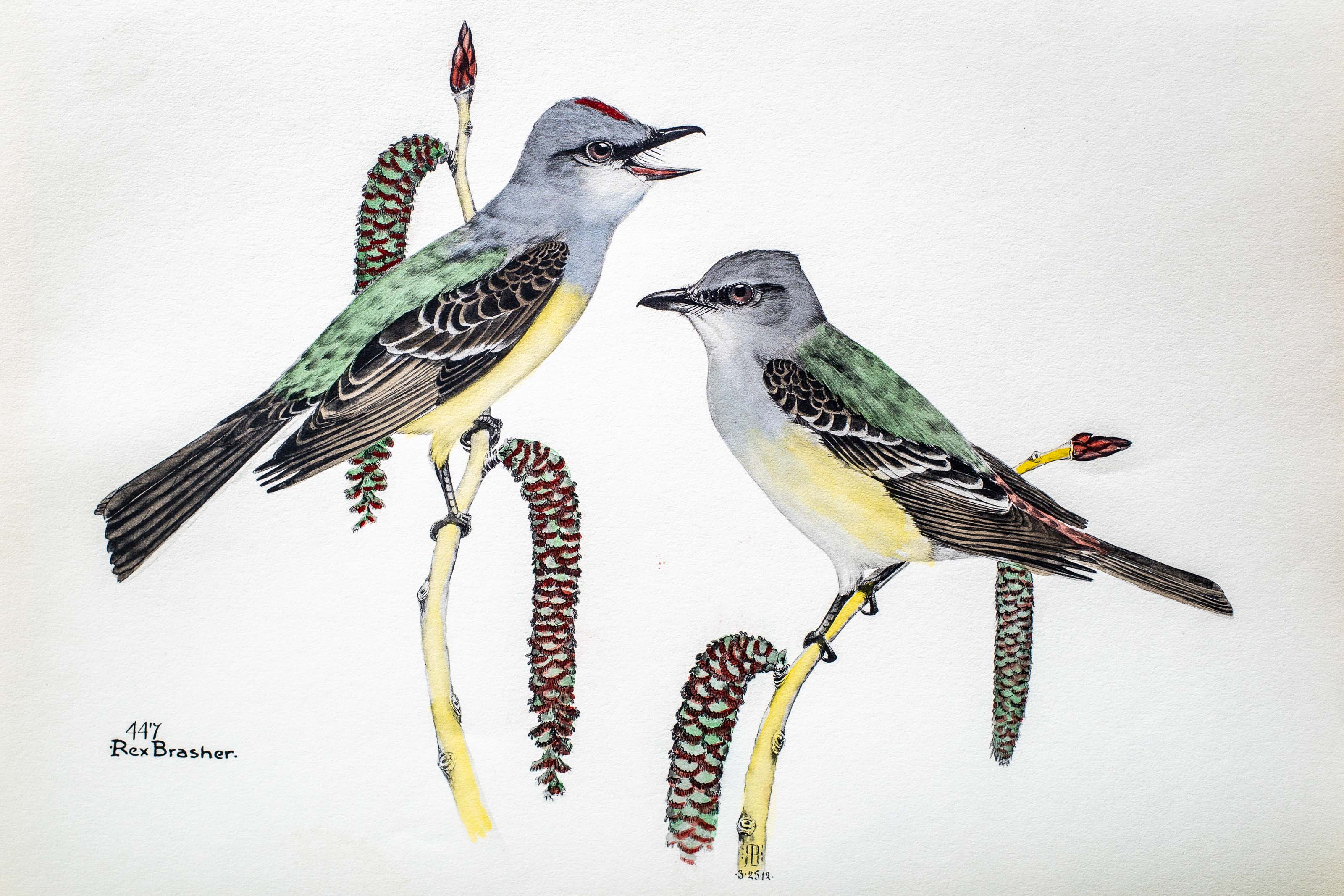
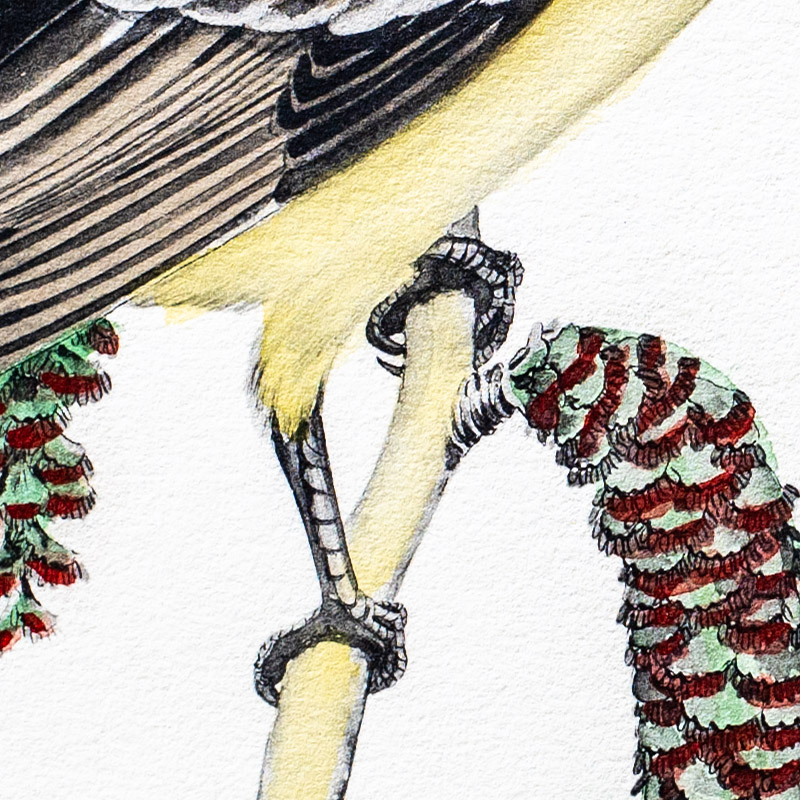
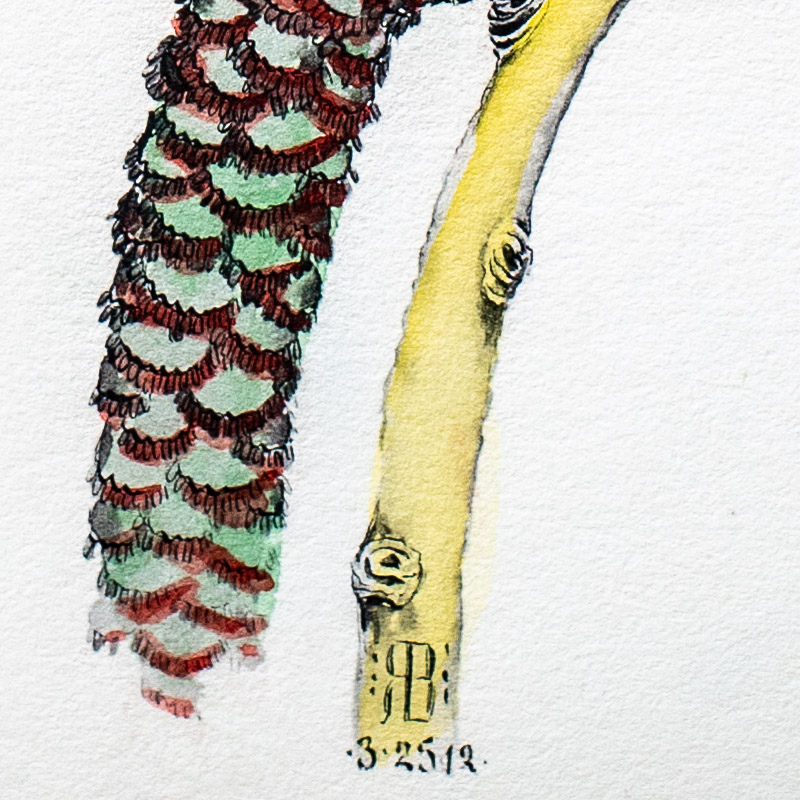
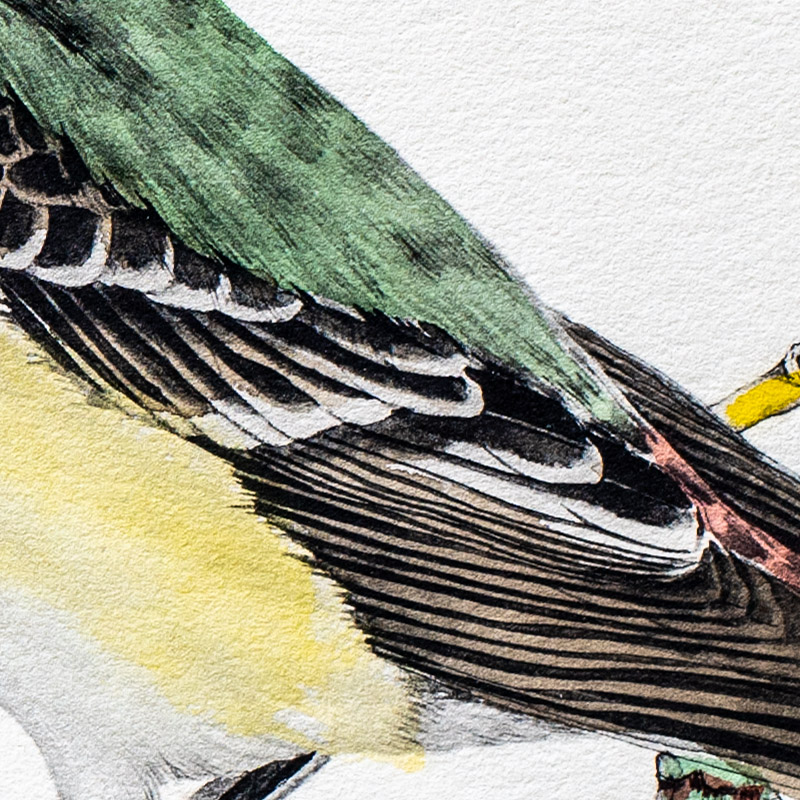
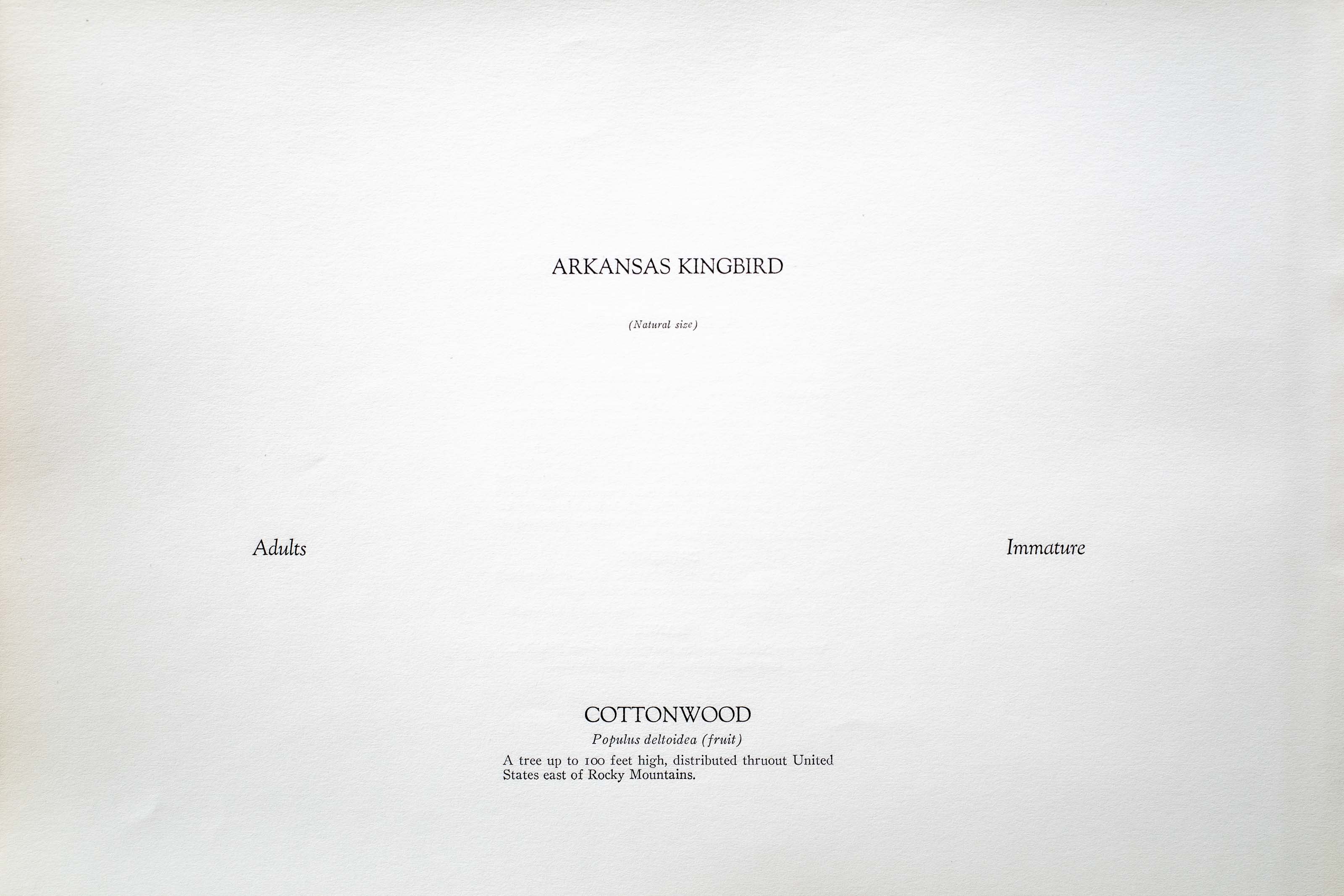
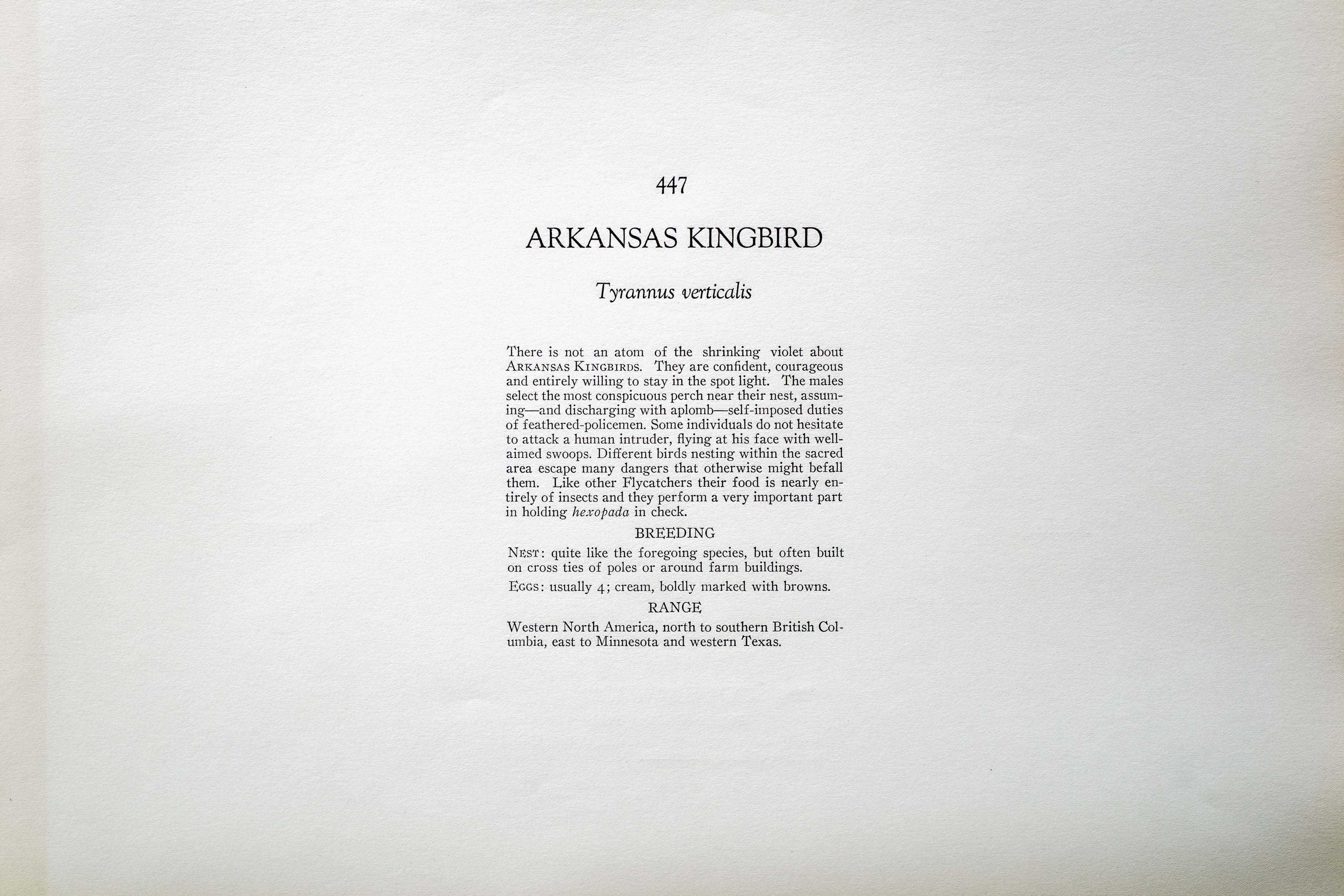

1912
1931
7
447
A team of dedicated board members, volunteers, and student interns has published every page in Volume 9. This volume includes 360 images of paintings and lyrical descriptions of birds, now available online for everyone to enjoy anywhere in the world. This is a monumental task. Each volume requires approximately 400 hours to photograph, edit, transcribe, catalog, and publish online. We need your support to complete this work.
If you're tech-savvy, have a good eye, are meticulous with details, and love structured data, please consider volunteering by emailing us at hello@rexbrasher.org.
We encourage all bird lovers and supporters to consider a monetary donation to support our mission to make Rex's work available for everyone. You can provide a one-time or recurring donation online.
There is not an atom of the shrinking violet about ARKANSAS KINGBIRDS. They are confident, courageous and entirely willing to stay in the spot light. The males select the most conspicuous perch near their nest, assuming — and discharging with aplomb — self-imposed duties of feathered-policemen. Some individuals do not hesitate to attack a human intruder, flying at his face with well-aimed swoops. Different birds nesting within the sacred area escape many dangers that otherwise might befall them. Like other Flycatchers their food is nearly entirely of insects and they perform a very important part in holding hexopada in check.
NEST: quite like the foregoing species, but often built on cross ties of poles or around farm buildings.
EGGS: usually 4; cream, boldly marked with browns.
Western North America, north to southern British Columbia, east to Minnesota and western Texas.
A tree up to 100 feet high, distributed thruout United States east of Rocky Mountains.